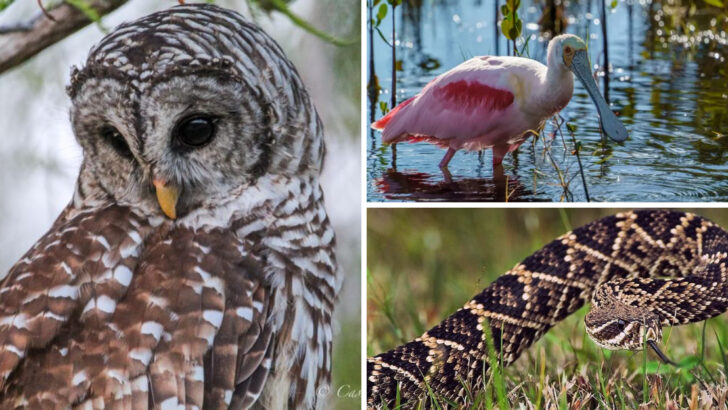Some creatures belong in legends.
The Everglades is crawling, slithering, swimming proof of that.
Where else can you lock eyes with an alligator, watch a manatee float by like a potato-shaped ghost, and then get buzzed by a roseate spoonbill in the same hour?
It’s wild.
It’s weird.
And it’s brimming with life you won’t see anywhere else.
From elusive panthers to prehistoric-looking turtles, this place is a living, breathing animal kingdom—minus the fences.
So grab your binoculars, maybe a pair of waterproof boots, and let’s wade into the untamed heart of Florida.
These 23 animals don’t just survive in the swamp—they rule it.
American Alligator
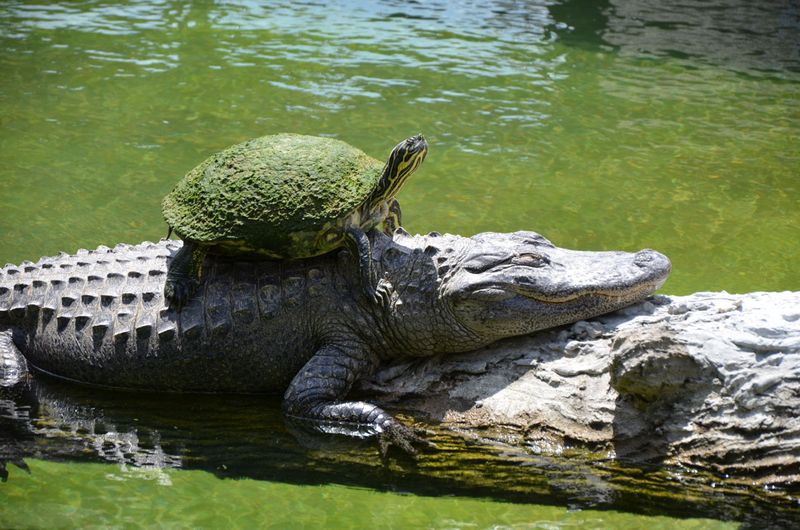
The American Alligator is a symbol of the Everglades, with its prehistoric appearance and formidable presence. These reptiles can grow up to 15 feet long and weigh over 1,000 pounds. They play a crucial role as apex predators, maintaining the balance of their ecosystem. You might catch a glimpse of them sunbathing on the banks or gliding stealthily through the water. Despite their fearsome reputation, alligators are generally shy creatures. Keep your distance and admire their power from afar, as they continue to be an integral part of the Everglades’ charm and complexity.
Roseate Spoonbill
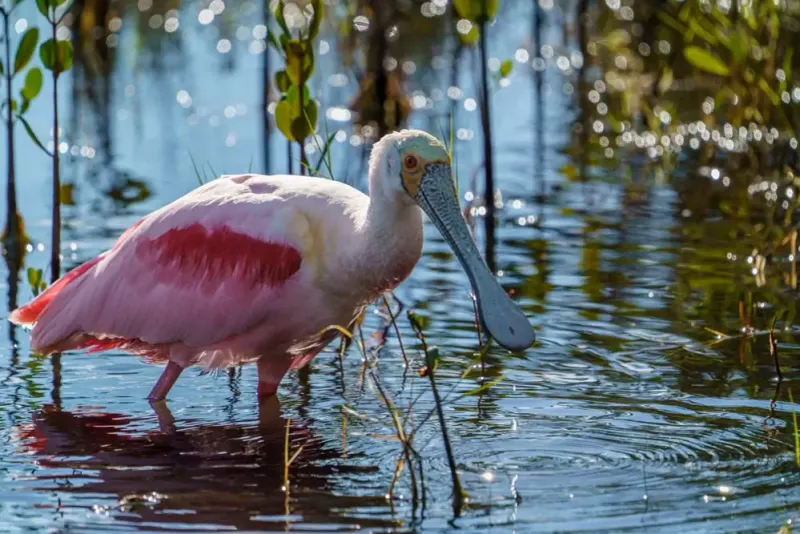
The Roseate Spoonbill is a sight to behold with its stunning pink feathers and unique bill. This wading bird is often mistaken for a flamingo due to its colorful appearance. Found in marshes and wetlands, the spoonbill uses its bill to sift through mud and water for food. Their serene presence adds a splash of color to the Everglades’ landscape. Observing them in flight, with their long wings gracefully flapping, is truly a delightful experience. These birds are a testament to the diversity and beauty of the Everglades’ avian population.
Florida Panther

The Florida Panther is a subspecies of cougar and one of the most endangered mammals. With only about 120 to 230 individuals left, spotting one is a rare privilege. This elusive predator roams the forest and swamplands, hunting deer and wild hogs. Conservation efforts are crucial to their survival. These panthers are solitary creatures, preferring the cover of night for their activities. Their presence is a vital indicator of the ecosystem’s health. Encountering a Florida Panther is an unforgettable reminder of the wild heart beating within the Everglades.
American Crocodile
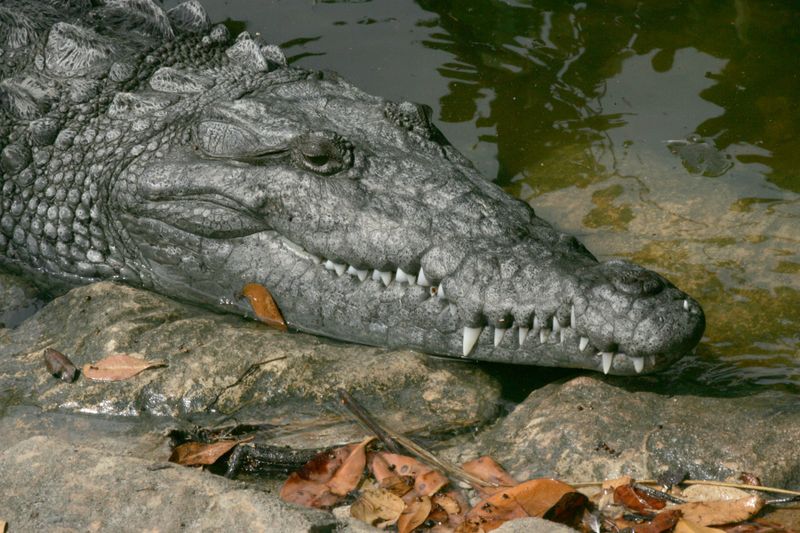
The American Crocodile, often confused with its alligator cousin, is another magnificent reptile dwelling in the Everglades. Unlike alligators, crocodiles prefer saltwater habitats, often found near coastal areas and brackish waters. With a more V-shaped snout and lighter skin, they can grow up to 20 feet long. Observing these creatures requires cautious respect due to their powerful jaws and territorial nature. Their presence highlights the Everglades’ unique mix of habitats, where freshwater meets the sea. Witnessing a crocodile in its natural environment is a thrilling encounter for any wildlife enthusiast.
Great Egret

The Great Egret, with its striking white feathers and long, slender neck, exudes elegance and grace. Often seen standing motionless in shallow waters, it patiently waits for fish and frogs to pass by. This bird’s presence is a serene reminder of nature’s patience and beauty. During breeding season, egrets develop delicate plumes on their backs, adding to their allure. Whether in flight with their necks tucked in or poised perfectly still, Great Egrets are a captivating sight in the Everglades. Their gentle beauty is a testament to the tranquil side of this diverse environment.
West Indian Manatee
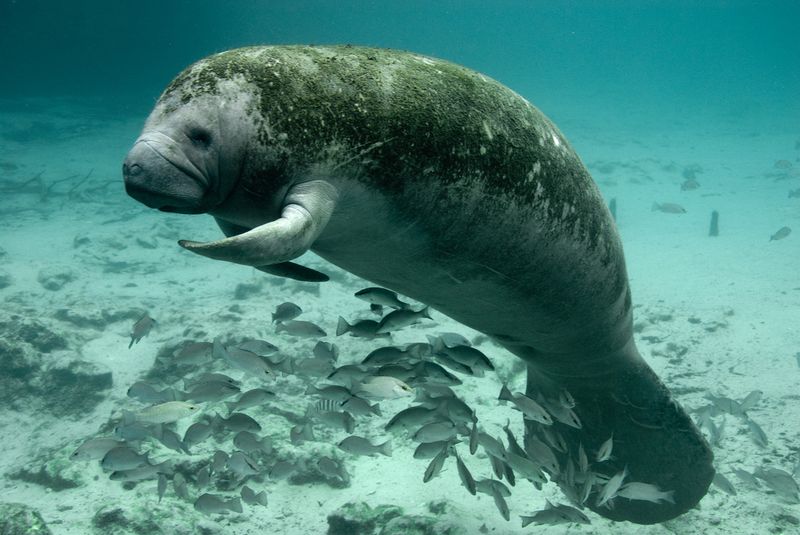
The West Indian Manatee, often called the “sea cow,” is a gentle giant of the Everglades. These slow-moving herbivores are known for their docile nature and are often seen grazing on seagrass in warm waters. Weighing up to 1,200 pounds, manatees are surprisingly agile swimmers. Their curious nature sometimes brings them close to boats, so it’s important to keep a respectful distance. Manatees are a beloved icon of the region, symbolizing the need for conservation efforts to protect these vulnerable creatures and their delicate habitats in the Everglades.
Eastern Indigo Snake
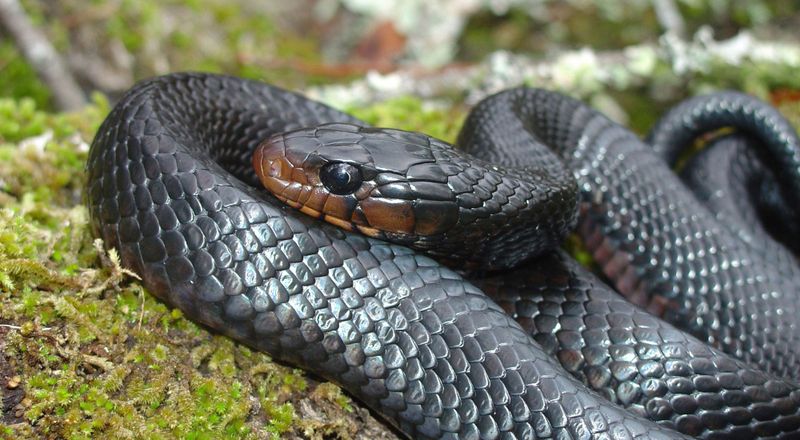
The Eastern Indigo Snake is the longest native snake in North America, reaching lengths of up to 8 feet. This non-venomous species is remarkably beautiful, with glossy blue-black scales that shimmer in the light. They play a crucial role in controlling venomous snake populations. Often found in pine forests and scrublands, they are active during the day. Despite their size, Indigo Snakes are shy and avoid confrontation. Their presence in the Everglades is a sign of a healthy ecosystem. Spotting one is a rare and wonderful experience for nature lovers exploring the region.
Osprey

The Osprey, a skilled hunter, is often seen soaring over the Everglades with its keen eyes scanning for fish. Known as the “sea hawk,” this bird of prey is an expert at diving into water to catch its meal. With a wingspan of up to 6 feet, it’s a majestic sight against the clear blue sky. Ospreys build large nests on treetops or man-made structures, returning to them year after year. Their presence is a sign of a healthy fish population, essential for the Everglades’ ecological balance. Watching an Osprey in action is truly inspiring.
Florida Softshell Turtle
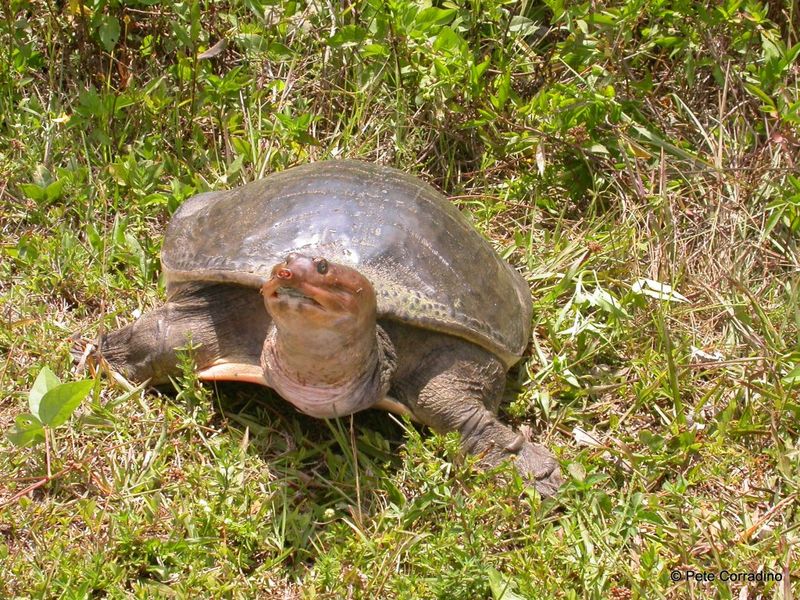
The Florida Softshell Turtle is easily recognized by its leathery, pancake-like shell and long, tubular snout. These turtles are well-adapted to life in freshwaters, spending most of their time buried in the mud or sand. With powerful webbed feet, they are agile swimmers and can move quickly when threatened. They feed on fish, amphibians, and aquatic plants. Spotting one peeking out of the water is a delightful surprise for visitors. Their quirky appearance and behavior add to the Everglades’ rich tapestry of wildlife, showcasing the diversity of life thriving in this wetland paradise.
Anhinga
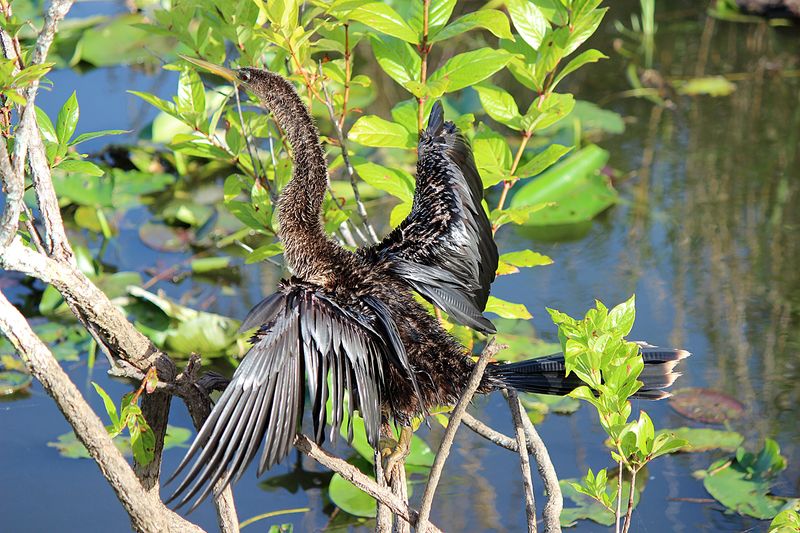
The Anhinga, also known as the “snake bird,” is a fascinating sight in the Everglades. Its long neck and sharp beak make it an adept hunter, spearing fish with precision. After diving, it spreads its wings to dry, resembling a cormorant. Anhingas are often seen perched on branches, soaking up the sun. This behavior is crucial for regulating their body temperature. Their unique hunting style and striking silhouette add intrigue to the Everglades’ avian community. Observing an Anhinga in its natural habitat is a captivating experience for bird watchers and nature enthusiasts alike.
Black Bear
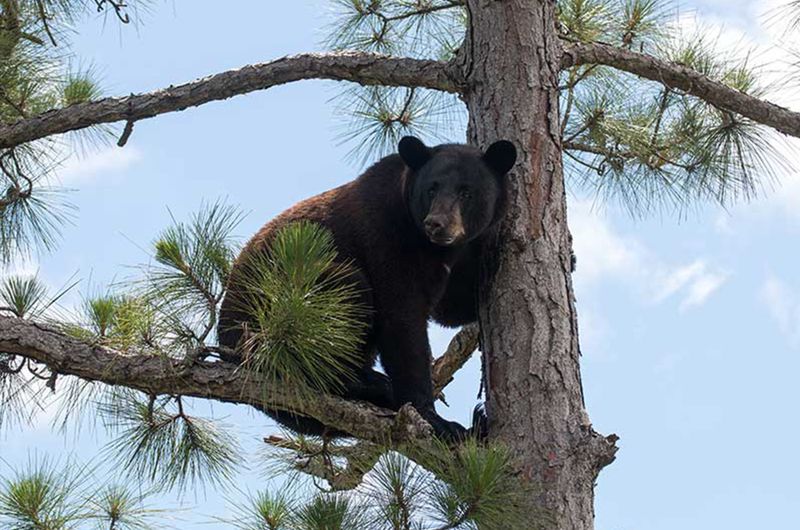
The Florida Black Bear is the only bear species found in the state, often roaming through the forests and swamps of the Everglades. These omnivorous creatures have a varied diet, including fruits, nuts, and small animals. Weighing up to 450 pounds, they are a powerful presence in their habitat. Black Bears are mostly solitary, with a keen sense of smell guiding their foraging. Despite their size, they are elusive and tend to avoid humans. Spotting a Black Bear is a rare and thrilling encounter, reminding us of the wild wonders lurking within this diverse ecosystem.
Eastern Diamondback Rattlesnake
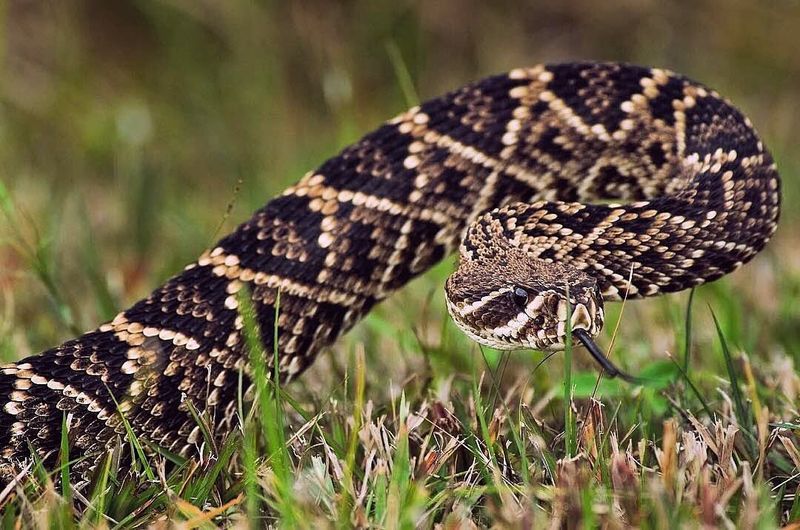
The Eastern Diamondback Rattlesnake is the largest venomous snake in North America. With its distinctive diamond pattern and rattle-tipped tail, it’s both feared and respected. Preferring dry, sandy areas, these snakes are ambush predators, relying on camouflage to catch their prey. Their presence is a reminder of the delicate balance between predator and prey in the Everglades. While encounters can be dangerous, respecting their space ensures safety for both humans and snakes. Observing this magnificent reptile from a safe distance offers a glimpse into the complex web of life thriving in these diverse habitats.
Snail Kite

The Snail Kite is a specialized raptor found in the Everglades, known for its diet focused almost exclusively on apple snails. With a hooked beak tailored for extracting snails from their shells, this bird is a marvel of evolution. Snail Kites are often seen gliding low over marshes, scanning for their prey. Their presence is closely tied to the health of the wetland ecosystem. Watching a Snail Kite in action is witnessing nature’s precision and adaptability. These birds are a testament to the specialized and interconnected world of the Everglades’ wildlife.
Wood Stork

The Wood Stork is an iconic wading bird of the Everglades, easily identified by its bald head and heavy bill. These birds use their sensitive bills to feel for prey in the water, snapping shut when they sense movement. Wood Storks are social creatures, often seen in large flocks. Their nesting colonies provide essential habitat for a variety of other species. Once endangered, their numbers have rebounded, symbolizing successful conservation efforts. The sight of a Wood Stork gracefully wading through the wetlands is a reminder of the resilience and beauty of the Everglades.
Barred Owl
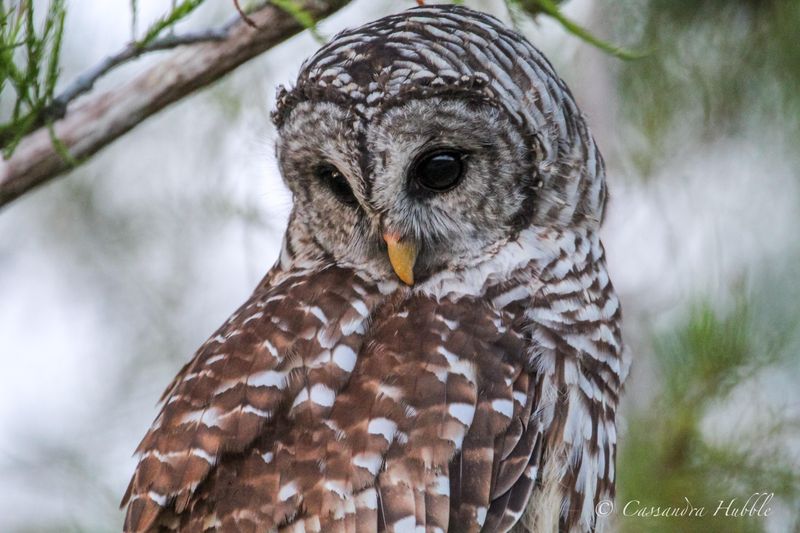
The Barred Owl is a nocturnal hunter, known for its hauntingly beautiful call echoing through the Everglades’ forests. With its round face and soulful eyes, this owl is an expert at blending into its surroundings. They feed on small mammals, birds, and amphibians, using their keen senses to spot prey in the dark. Observing a Barred Owl in its natural habitat is a rare treat, offering a glimpse into the mysterious night world of the Everglades. Their presence adds to the rich tapestry of life thriving in this unique ecosystem.
Northern Cardinal
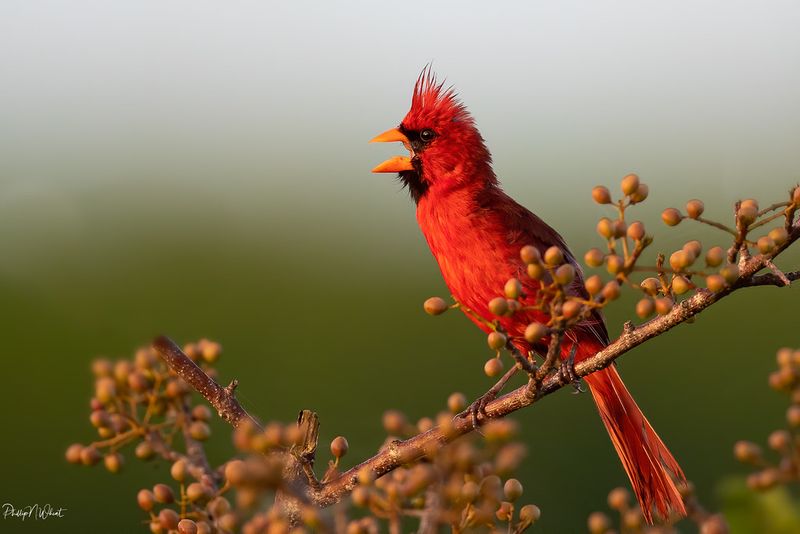
The Northern Cardinal, with its striking red plumage and distinctive crest, is a familiar sight in the Everglades’ forests and gardens. Males are particularly vibrant, while females boast a more subdued, yet beautiful, color palette. Cardinals are year-round residents, known for their melodic songs and strong pair bonds. They often nest in dense shrubs and thickets, adding splashes of color to the landscape. Watching a cardinal flit through the trees is a simple joy, a reminder of nature’s everyday beauty and the vibrant life that thrives in the Everglades.
Nine-Banded Armadillo
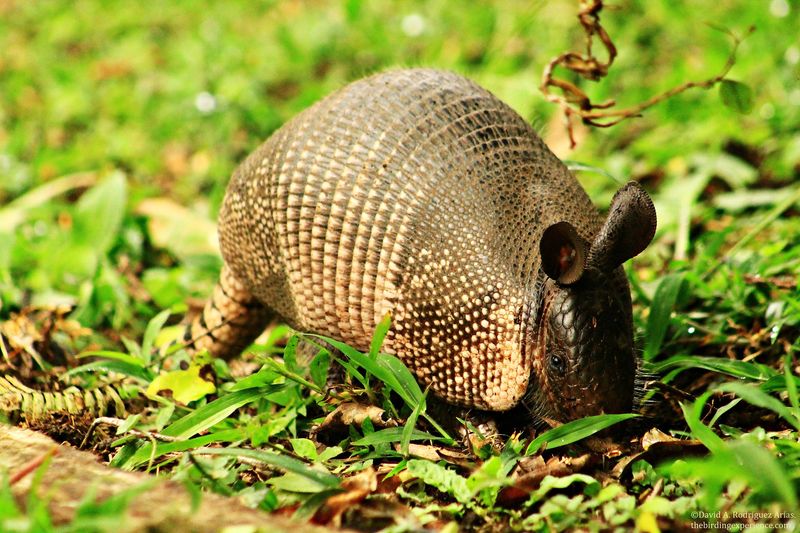
The Nine-Banded Armadillo is a unique mammal, known for its armored shell and ability to dig efficiently. These nocturnal creatures are often found foraging for insects and small invertebrates. Their unusual appearance and quirky behavior make them a fascinating sight in the Everglades. Armadillos are solitary animals, using their keen sense of smell to locate food. While they are not native to Florida, their adaptability has allowed them to thrive. Encountering an armadillo is a delightful surprise, showcasing the diverse array of wildlife inhabiting the Everglades’ varied landscapes.
Pine Warbler
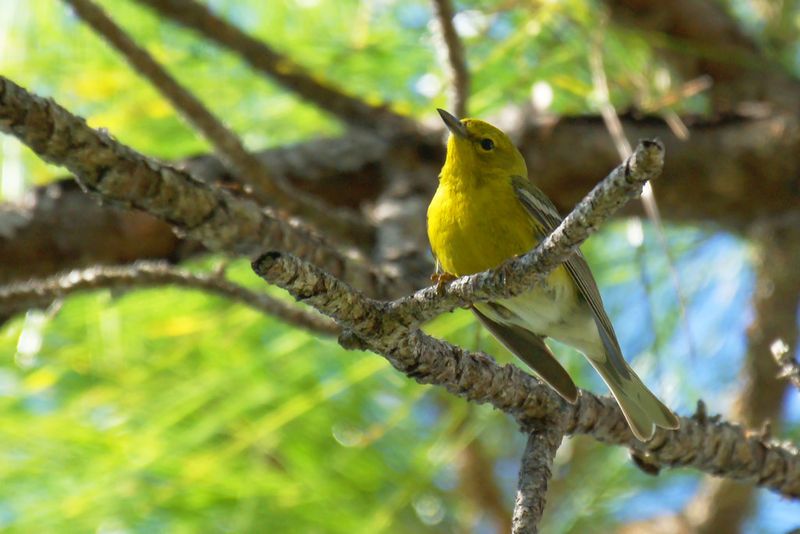
The Pine Warbler is a small songbird known for its cheerful trills and bright yellow plumage. Found in pine forests, these birds flit through the trees, searching for insects and seeds. Their sweet songs are a delightful addition to the Everglades’ soundscape. During migration, they travel in mixed flocks, showcasing their social nature. Pine Warblers are a vibrant reminder of the interconnectedness of forest ecosystems. Observing them is a joyous experience, highlighting the beauty and complexity of the Everglades’ avian community. Their presence enriches the auditory tapestry of this diverse habitat.
Mottled Duck
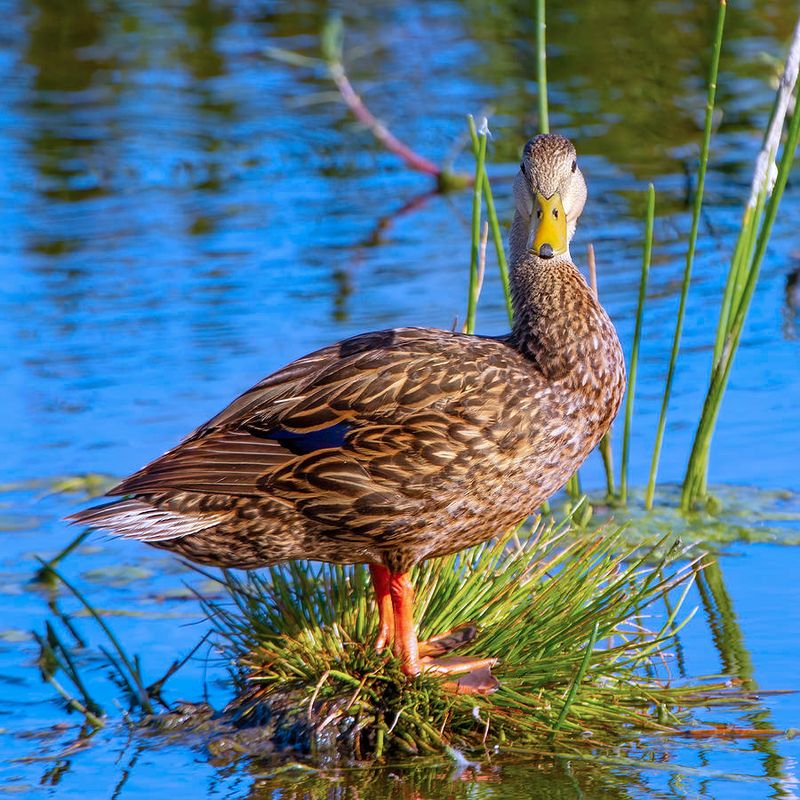
The Mottled Duck is a dabbling duck found year-round in the Everglades. With its speckled brown plumage and distinctive blue wing patch, it blends seamlessly into its wetland habitat. These ducks feed on aquatic plants, insects, and small fish, often seen dabbling in shallow waters. Mottled Ducks are known for their strong pair bonds, often seen in pairs or small groups. Their presence is a testament to the Everglades’ rich biodiversity, offering a glimpse into the dynamic life of its marshes and waterways. Watching them glide gracefully on water is a serene experience.
White Ibis
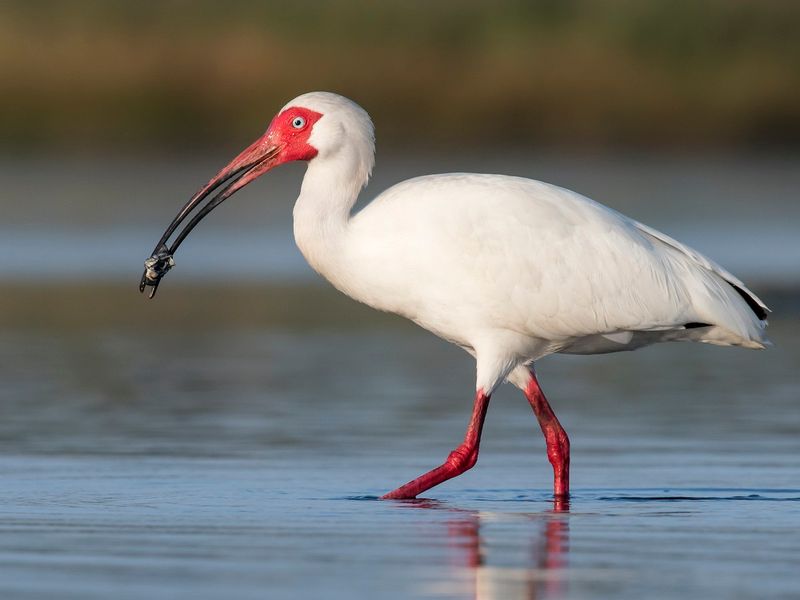
The White Ibis is a wading bird with striking white plumage and a long, curved red bill. These birds are social, often seen in flocks foraging in the mud for crustaceans and insects. Their presence is a common sight in the Everglades, adding to the vibrant tapestry of waterfowl. The White Ibis is known for its graceful flight, with outstretched wings forming a striking silhouette against the sky. These birds play a crucial role in the ecosystem, their foraging helping to aerate the soil. Observing a flock of Ibises is a captivating spectacle of nature’s elegance.
River Otter
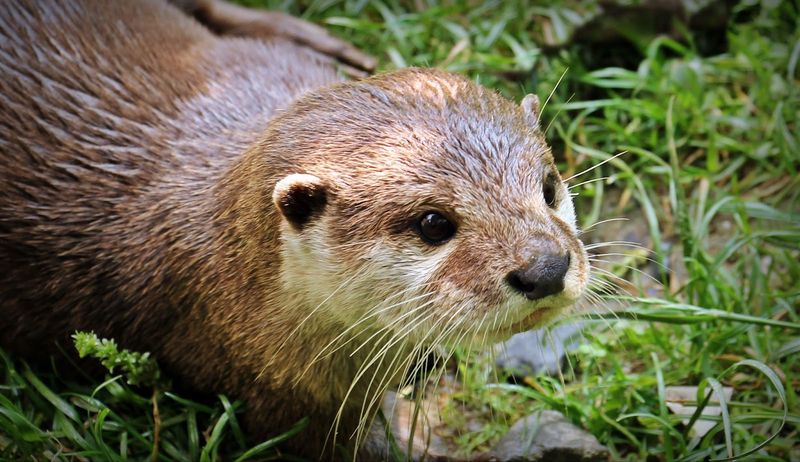
The River Otter is a playful and agile mammal found in the waterways of the Everglades. Known for their sleek bodies and mischievous behavior, otters are expert swimmers, often seen sliding down muddy banks or frolicking in the water. They feed on fish, crustaceans, and small mammals. Observing their playful antics is a delightful experience, offering a glimpse into the lighter side of the Everglades’ wildlife. River Otters are a testament to the adaptability and resilience of life in these wetlands, enchanting visitors with their lively presence and boundless energy.
Bald Eagle
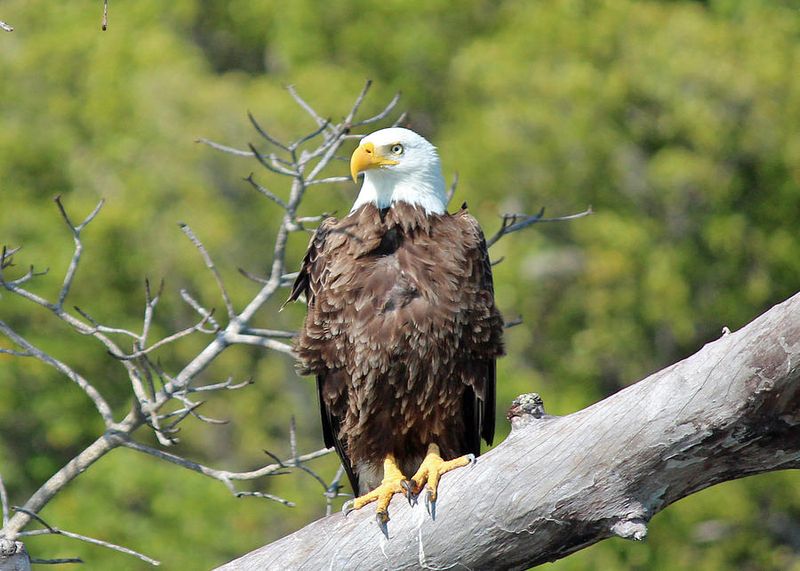
The Bald Eagle, a symbol of strength and freedom, can be seen soaring majestically over the Everglades. With a wingspan of up to 7 feet and a distinctive white head, these birds are masterful hunters. They primarily feed on fish, using their sharp talons and keen eyesight to snatch prey from the water. Bald Eagles build massive nests, often reused and added to each year. Spotting one in the wild is a breathtaking experience, a reminder of the grandeur of nature and the intricate web of life that sustains the Everglades’ ecosystem.
The Peeking Purple Gallinule
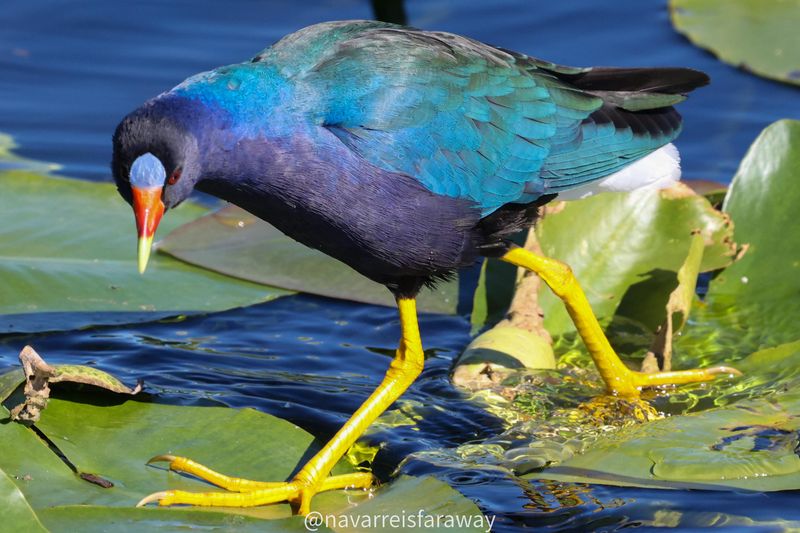
Imagine a bird that’s a painter’s dream come true. The Purple Gallinule, with its kaleidoscope of colors, seems almost too vivid for reality. This feathered sprite is often spotted strolling gracefully over floating vegetation. Its long toes help it balance as it forages for seeds and insects.
Watching the Purple Gallinule in its natural habitat feels like witnessing a painting in motion. Its curious nature and striking appearance make it a true spectacle for bird watchers.
Did you know? The locals affectionately call it the ‘swamp hen.’ Its lively antics bring a splash of color to the lush landscape.

